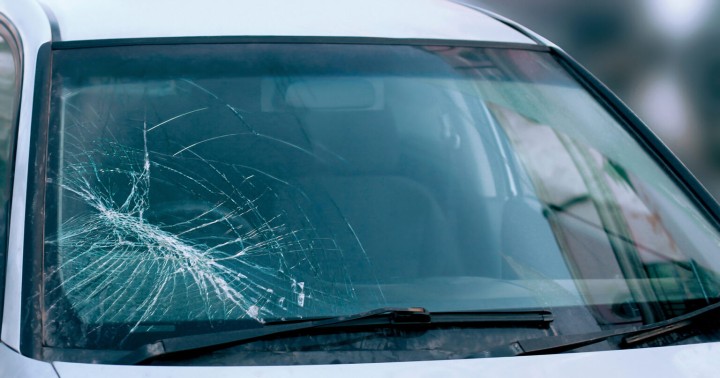Picture this: you’re running late, iced coffee in one hand, Spotify playlist on point—and smack in the middle of your windshield is that familiar crack, glaring at you like it’s judging your life choices. You tell yourself, “It’s just a little one. I’ll fix it next week.”
Well, next week might come with flashing lights, a ticket, and a lot more regret than that $80 repair bill.
In this guide, we’ll break down the real deal about cracked windshields, covering everything from state laws on the issue to why the size and location of the damage actually make a big difference.
Spoiler alert: if you’re in Phoenix, where the sun cooks glass like it’s a baking sheet, you might want to keep reading.

Why Driving with a Cracked Windshield Could Cost You
Let’s not sugarcoat it: a cracked windshield is more than an eyesore—it’s a potential wallet-drainer. Driving with windshield damage can lead to:
- Fines or citations, depending on your state
- Vehicle inspection failures
- Insurance issues if you’re involved in an accident
That crack may have started as a pebble’s love tap on the freeway, but letting it sit too long can compromise visibility and safety. And the longer you wait, the more you’ll pay. What could’ve been a quick $50–$100 fix can turn into a full windshield replacement that runs several hundred bucks. Ouch.
State Laws on Cracked Windshields: What You Need to Know
So, what does the law actually say about cracked windshields? You’d think it’s black and white, but no—it’s a legal gray area dipped in nuance. Most states, including Arizona, don’t list specific measurements or crack locations in the law. Instead, they go with the golden phrase: “obstructed view.”
What does it mean? If the crack blocks your ability to clearly see the road, pedestrians, or traffic lights, you’re in hot water. Different states interpret that differently, so Googling state laws cracked windshield in your area is never a bad idea.
Here’s the kicker—if a law enforcement officer thinks your windshield impairs your view, their opinion is all that matters in the moment. That’s the kind of “subjective” you don’t want to argue with on the side of the road.
How Big or Where the Crack Is Makes a Legal Difference
It’s not just what is cracked—it’s where and how much. A tiny rock chip on the passenger side? You’re probably safe. A foot-long lightning bolt of shattered glass across the driver’s field of view? Say hello to a potential fine—or worse, a crash.
Here’s a quick legal lowdown:
- Cracks over 6 inches: Most states flag these as unsafe
- Cracks in the driver’s line of sight: Huge no-no
- Multiple chips or “spidering” cracks: Might lead to a full windshield replacement
The visibility test is simple: if you have to tilt your head to see the road clearly, you’re overdue for a fix.
Can You Get Pulled Over for a Cracked Windshield?
Short answer? Yep. Long answer? Yep, especially in places like Phoenix where your windshield has to compete with sun glare, dust storms, and surprise summer rain.
Arizona cops aren’t on windshield patrol 24/7—but if they spot a crack big enough to question your visibility or your vehicle’s roadworthiness, they can pull you over. And they won’t care that you were “just about to get it fixed.”
Here’s where windshield replacement and windshield repair in Phoenix come into play. Getting it handled early can save you from fines, tickets, and unsafe driving. Trust us—nothing ruins Taco Tuesday like a fix-it ticket and court date.
The Hidden Dangers of Driving with Windshield Damage
Legal risks aside, a cracked windshield is a giant “nah” from a safety perspective. Your windshield isn’t just for blocking bugs and rain—it’s part of your vehicle’s structural support system.
Here’s what a damaged windshield compromises:
- Airbag performance: The windshield plays a key role in ensuring airbags deploy the right way.
- Roof strength: In a rollover, your windshield keeps the roof from caving in
- Debris protection: Even a minor crack weakens the glass and makes shattering more likely
So yeah, that tiny crack? It’s like letting termites nibble at your foundation. It might look small now, but it’s not something you want to test in a real-life emergency.
When to Repair or Replace Your Windshield to Avoid Fines
So, when do you need to call in the pros? Here’s your cheat sheet:
- Repair if:
- The crack measures under 6 inches in length.
- Damage is not in the driver’s direct line of sight
- There are just one or two small chips
- Replace if:
- Crack goes across the windshield
- Multiple chips or “webbing” have spread
- Damage affects visibility or wiper zones
Final Thoughts: Crack Today, Costly Tomorrow
Look—we get it. Life is busy. That little crack isn’t screaming at you like your inbox or your toddler. But it is quietly plotting your downfall. Fines, legal trouble, and safety hazards all start with ignoring that innocent-looking chip.
The smart move? Book a quick check-up. Whether it’s a clean patch-up or full windshield replacement, we’ve got Phoenix drivers covered—fast, affordable, and hassle-free.
Don’t roll the dice on safety or the law. Get your windshield fixed before it cracks your budget.
FAQs
Is it legal to operate a vehicle with a cracked windshield?
It depends. Most laws don’t list specific crack sizes, but if the damage obstructs your view, you can absolutely get fined.
Can a police officer really pull me over for a windshield crack?
Yes, and they do. If an officer believes your windshield damage impacts your ability to see the road clearly—especially in the driver’s direct line of sight—they’re within their rights to stop you.
Does insurance cover windshield repairs or replacements?
In many cases, yes. Most comprehensive auto insurance policies cover windshield damage, especially from road debris, hail, or unexpected impacts. In Arizona, insurers are required to offer full glass coverage with no deductible, meaning your repair could be free.
How do I know if I should repair or replace my cracked windshield?
Here’s a simple breakdown: if the crack is shorter than six inches, not in the driver’s line of sight, and hasn’t spread, a repair will usually do the trick. But if the crack is long, spreading, near the edges, or affects your view while driving, a full replacement is safer—and often required by law.
We hope you found this blog post on Can You Be Fined for Driving with a Cracked Windshield? useful. Be sure to check out our post on Tips for Safely Transporting Your Vehicle During a Move for more great tips!
Have Experience in the Moving Industry? Want an Additional Income Stream? Work With All Around Moving!
Join this unique opportunity. Working with us will enable you to earn money. We share the profits 50/50 on all jobs booked with us. Click here to learn more.





